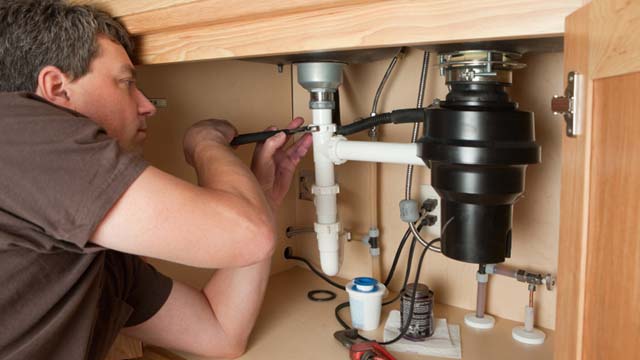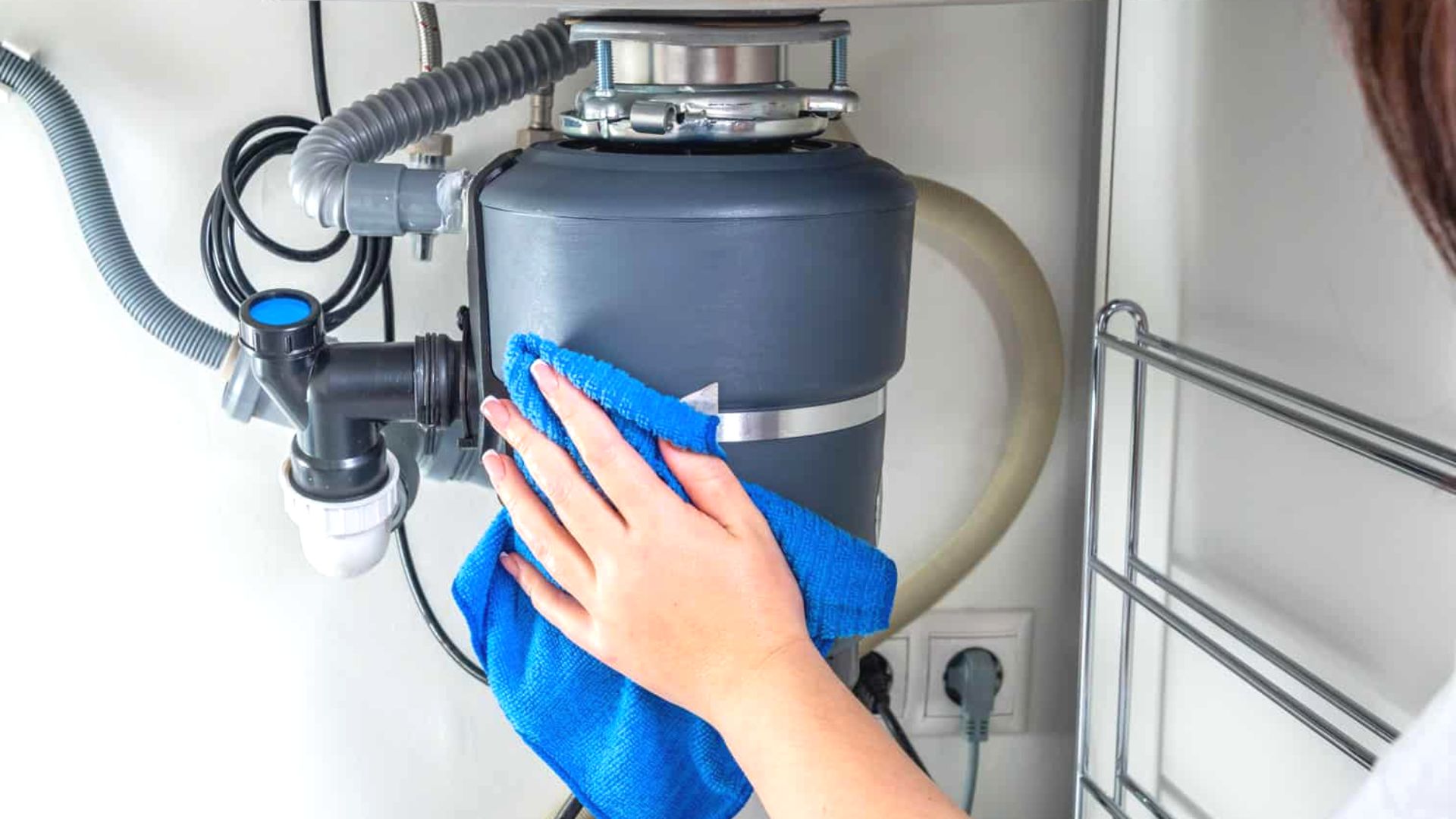Practical Techniques for Repairing a Dripping Garbage Disposal
Practical Techniques for Repairing a Dripping Garbage Disposal
Blog Article
What are your concepts about Why Is ?

Waste disposal unit are essential kitchen area devices that aid in throwing away food waste successfully. However, a dripping waste disposal unit can be an irritating and messy problem to handle. Luckily, lots of leakages can be dealt with conveniently with a couple of straightforward actions. In this article, we will discuss just how to deal with a dripping waste disposal unit effectively.
Intro
Garbage disposals are set up under kitchen area sinks and are created to shred food waste into smaller items, allowing it to go through the pipes system quickly. While these gadgets are typically trustworthy, leakages can happen in time because of wear and tear, loosened links, or damage to the unit.
Step-by-Step Overview to Dealing With a Dripping Garbage Disposal
Switch off the Power
Prior to attempting any fixings, make sure that the power to the garbage disposal device is shut off to stop the danger of electrical shock.
Find the Leakage
Determine the precise area of the leak and establish the cause
Tighten up Connections
Use a wrench to tighten any kind of loosened links between the disposal unit and the pipes system.
Replace Seals or Gaskets
If the leak is because of used seals or gaskets, eliminate the old elements and replace them with new ones.
Patching Splits or Holes
For cracks or holes in the disposal system, use epoxy or an appropriate patching material to secure the broken location.
Identifying the Source of the Leakage
Prior to trying to deal with a dripping waste disposal unit, it is essential to determine the source of the leak. This can commonly be done via aesthetic examination or by performing straightforward examinations.
Visual Assessment
Check the garbage disposal system meticulously for any type of signs of water leak. Pay close attention to locations around seals, gaskets, and link points.
Examining for Leaks
One means to evaluate for leakages is by running water with the disposal unit and looking for any type of noticeable signs of leakage.
Usual Reasons For Leakages in Garbage Disposals
Worn Seals and Gaskets
Seals and gaskets play a vital role in protecting against water from dripping out of the waste disposal unit. In time, these elements can degrade, bring about leakages around the disposal device.
Loose Links
The links in between the waste disposal unit and the pipes system can come to be loosened with time, creating water to leakage out throughout operation.
Fractures or Holes in the Disposal Unit
Physical damages to the waste disposal unit, such as splits or holes in the real estate, can also cause leakages.
Devices and Materials Needed for Repairing a Leaking Waste Disposal Unit
Prior to beginning the repair work process, collect the required devices and materials, including a screwdriver, flexible wrench, plumbing professional's putty, substitute seals or gaskets, and epoxy or patching material for repairing splits or openings.
Evaluating the Waste Disposal Unit After Repair Service
Once the fixing is total, examine the garbage disposal by running water with it to make certain that the leak has actually been resolved.
Preventive Upkeep Tips to Prevent Future Leaks
To avoid future leakages, it is necessary to perform regular upkeep on your waste disposal unit. This consists of maintaining it clean, preventing placing non-food things or hard objects down the disposal, and occasionally looking for leakages or various other problems.
Final thought
In conclusion, fixing a leaking waste disposal unit is a reasonably simple procedure that can be completed with basic devices and materials. By complying with the actions detailed in this write-up and exercising preventive upkeep, you can maintain your garbage disposal in good working condition and prevent pricey repair work in the future.
HERE’S HOW TO FIX YOUR GARBAGE DISPOSAL
WHAT TO DO IF SOMETHING IS STUCK IN YOUR GARBAGE DISPOSAL
If the impeller won’t turn, there’s probably something stuck in the disposal. It could be a steak bone or peach pit, although plumbers report pulling all sorts of inappropriate objects out of disposals, such as bottle caps or aluminum foil. Make sure power to the disposal is off, and look inside to see if you can see the source of the jam.
Never stick your fingers in a disposal. Pull out anything you see with tongs or pliers.
If the disposal still won’t work, it may be time to call a plumber or consider buying a new disposal. GEM Plumbing & Heating is here for all of your garbage disposal needs.
WHAT TO DO IF YOUR GARBAGE DISPOSAL DRAIN IS CLOGGED
Take everything out from underneath your sink and put a bucket or other container under your disposal to catch any water that drains out. Disconnect your disposal from the power supply. If it’s plugged into a wall outlet, unplug it. If it’s hardwired into an electrical box, go to the electrical panel and turn off the breaker for the disposal. Pour ¼ cup of baking soda into the drain, followed by ½ cup of white vinegar. Give the solution a few minutes to fizz and do its work. Look into the disposal with a flashlight to see if you can see an object that might be causing the clog. If you see it, remove it using tongs or pliers. MORE TIPS ON DEALING WITH A CLOGGED GARBAGE DISPOSAL
Never use drain cleaner in a garbage disposal. It can damage the plastic parts inside the disposal. You can also be splashed with the caustic liquid while working to clear the clog. Beware! Never stick your fingers into a garbage disposal. Trust us — not a good idea. In many instances, your dishwasher drains through your garbage disposal. This allows the disposal to grind any large food particles that may be drained out of your dishwasher. There are some jurisdictions, however, where the plumbing code prohibits such a connection. WHAT TO DO WHEN YOUR DISHWASHER DRAINS THROUGH THE DISPOSAL
Run some water in the sink so your plunger has at least a ½-inch of water to create a seal and plunge vigorously up and down several times. You may need to repeat this several times. Run hot water down the drain to clear any residue that remains.

I'm just very fascinated with Why Is and I'm hoping you liked the entire entry. Sharing is caring. You just don't know, you could be helping someone out. Thanks a lot for your time invested reading it.
Visit Url Report this page